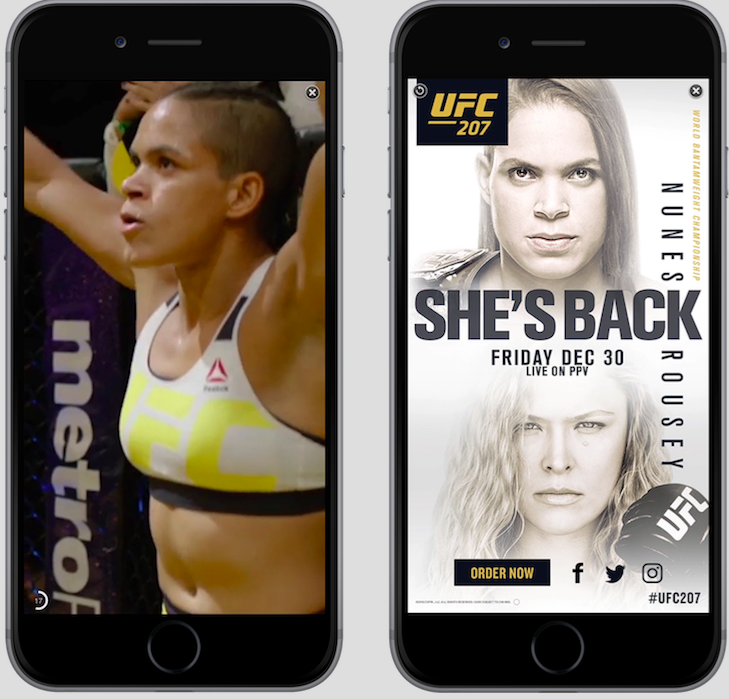Save 50% on a 3-month Digiday+ membership. Ends Dec 5.

It’s as reliable as your post-New Year’s Eve hangover. Every year, industry executives and self-proclaimed “thought leaders” cough up a dizzying array of trend pieces and prediction roundups to tell you what’s going to be hot–and not–in the coming year. Sometimes they’re right, sometimes they’re wrong, but we rarely stop to take stock of how accurate these predictions may be.
With 2017 in full swing, we checked in with creative agency execs to find out what’s still on their wish list. From vertical video to playables, we asked them which formats were delivering for them and which ones had failed to launch.
Vertical Video
Prediction: Mobile publishers will lean hard into vertical video in 2017
Example: Big names like the Washington Post and Nat Geo started dabbling in vertical video formats late last year to better align with young, mobile-savvy audiences, leading trend forecasters to proclaim 2017 would be the year of vertical for mobile publishers.
Verdict: Yup
Vertical video was a controversial pick for many media prognosticators last year. Online video purists still argue that that video is meant to be viewed in landscape, but try telling that to the coveted members of the Snapchat generation. “We don’t want to take people out of the experience they’re having, said Lauren Brockport, global UX team lead at Essential. “And with a mobile device, that experience is almost always vertical.”
Ad position: web_incontent_pos1
With 90 percent of all mobile device users reporting that they hold their phones vertically (other estimates range as high as 97 percent), marketers are finding more success by choosing to participate in those habits rather than reshape them. And while Snapchat and Facebook may have started the vertical video trend, the format now permeates the mobile app ecosystem, so you can reach audiences in non-social environments like news and games.

Personalization
Prediction: Personalized ad experiences will be commonplace in 2017 as marketers look to use data to target individuals
Example: Ecommerce giant Gilt used personalized push notifications to let repeat customers know when items from their wish list became available or went on sale. It’s not quite a personal shopper, but it does personalize the often-impersonal experience of online shopping.
Ad position: web_incontent_pos2
Verdict: Sort of?
Personalization was hotly tipped for 2017. A bevy of tech platforms promised to transform data collected by digital publishers and mobile apps into hyper-targeted ad experiences. In a world where Facebook and Spotify are serving tightly-honed experiences tied to individual identities and tastes, mobile marketers are obligated to meet raised expectations for personal treatment.
“We’re optimistic about personalization,” said Tameka Browley, a creative technology specialist at OME. “We’ve seen our television, music and media experiences become more attuned to us as individuals, it makes sense for ads to follow suit.”
However, Browley’s optimism is pinned more to potential than to practical applications. “We still aren’t seeing large-scale personalization to the degree we’d like. A lot of what people call personalization is just more specific segmenting, but I think we’re all still chasing that individual, one-to-one connection.” Browley is still bullish on the personalization trend, but for now her team isn’t involved in practical applications for large campaigns.
Playables
Prediction: Marketers will reach game-playing mobile users with interactive, playable in-game ads
Example: While browsing another entertainment app, a user sees a Candy Crush ad where they can swipe the candies like they are actually inside the game, getting a taste of Candy Crush within the ad unit itself. Then, if they like what they’ve played, they can tap to download the game directly.
Verdict: High score!
The latest estimates place the amount of time the average adults spends inside of mobile apps at two hours and 25 minutes per day, with mobile gaming audiences being the most actively engaged. With that in mind, experts predicted a big year for playables, an interactive ad format that lets users play a lightweight version of a game when they see it advertised within another game – getting them hooked in 30 seconds, and letting the game sell itself. Earlier this year, Google gave the format a boost by adding tools for playables to its Android developer kit.
“Playables have been great, especially for brands who make DR a priority.” says Guy Scanalone CCO of mobile marketing agency Vibe. “They can actually add to the experience rather than interrupt it, and they’re already leaned in so they’re more likely to engage with an offer or opportunity.”
Scanalone wouldn’t say which of his clients had deployed playable formats, but he noted that the format has appeared in some of the most popular mobile games on the market, including Candy Crush and Kim Kardashian’s mobile app.
Conclusion
Buzz doesn’t always beget business, but as the second quarter of 2017 winds down it appears that some of the big predictions from last year’s marketing fortune tellers have come to pass.
Ultimately, predicting the future of marketing can somewhere between tough and impossible. Rather than make sweeping assessments about what the future holds, it may be wiser for marketers to rethink the intervals at which they think about the future. Remaining forward-facing all year round and keeping a close watch on which formats perform will do more to help mobile marketers meet their goals than the long shot prediction that comes true.
More from Digiday

Ulta, Best Buy and Adidas dominate AI holiday shopping mentions
The brands that are seeing the biggest boost from this shift in consumer behavior are some of the biggest retailers.

Digiday+ Research Subscription Index 2025: Subscription strategies from Bloomberg, The New York Times, Vox and others
Digiday’s third annual Subscription Index examines and measures publishers’ subscription strategies to identify common approaches and key tactics among Bloomberg, The New York Times, Vox and others.

U.K. retailer Boots leads brand efforts to invest in ad creative’s data layer
For media dollars to make an impact, brands need ad creative that actually hits. More CMOs are investing in pre- and post-flight measurement.
Ad position: web_bfu
